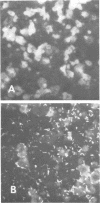Abstract
Sets of three Isolator blood culture tubes were seeded with low numbers of 96 strains of 26 bacterial species (fresh and stock clinical isolates). One tube was processed immediately, and the other two were held at 22 and 34 degrees C for 15 h before processing. Organism recovery was 99, 99, and 98%, respectively. Organism numbers increased at both 22 degrees C (60% of strains) and 34 degrees C (79% of strains). Especially notable was that the increases were seen with most strains of Staphylococcus aureus, streptococcal species, Pseudomonas, and all of the Enterobacteriaceae tested. Seven strains, including Streptococcus pneumoniae and Haemophilus influenzae, although viable, were recovered with a decreased number of organisms at each temperature. Acridine orange staining detected organisms in 53% of those Isolator tubes being held and 71% of those demonstrating a numerical increase, after incubation at 34 degrees C. In addition, it was noted that after processing, 48% of the strains that had increased in number while being held at 34 degrees C resulted in visible growth on agar media in 6 h. The results suggest that up to a 15-h delay in processing Isolator tubes may be possible and that acridine orange staining for the rapid detection of positive cultures may be useful in such a circumstance.
Full text
PDF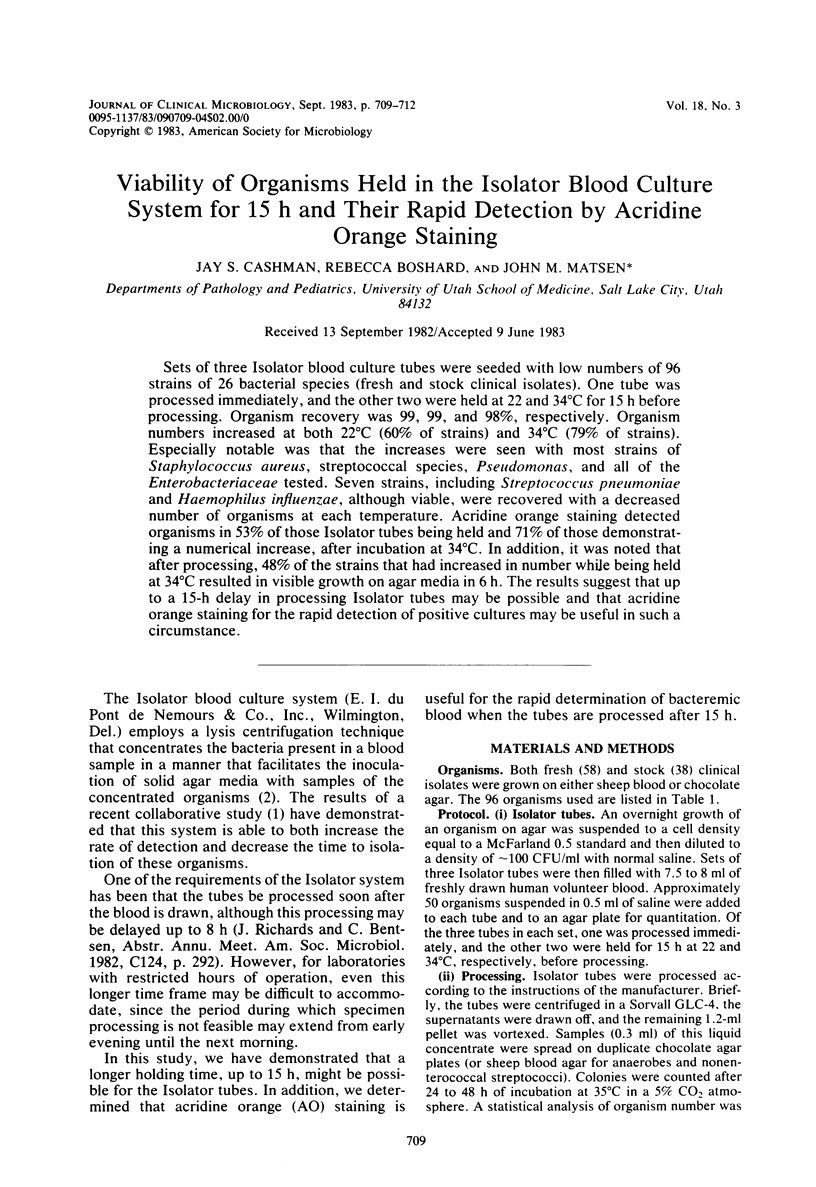
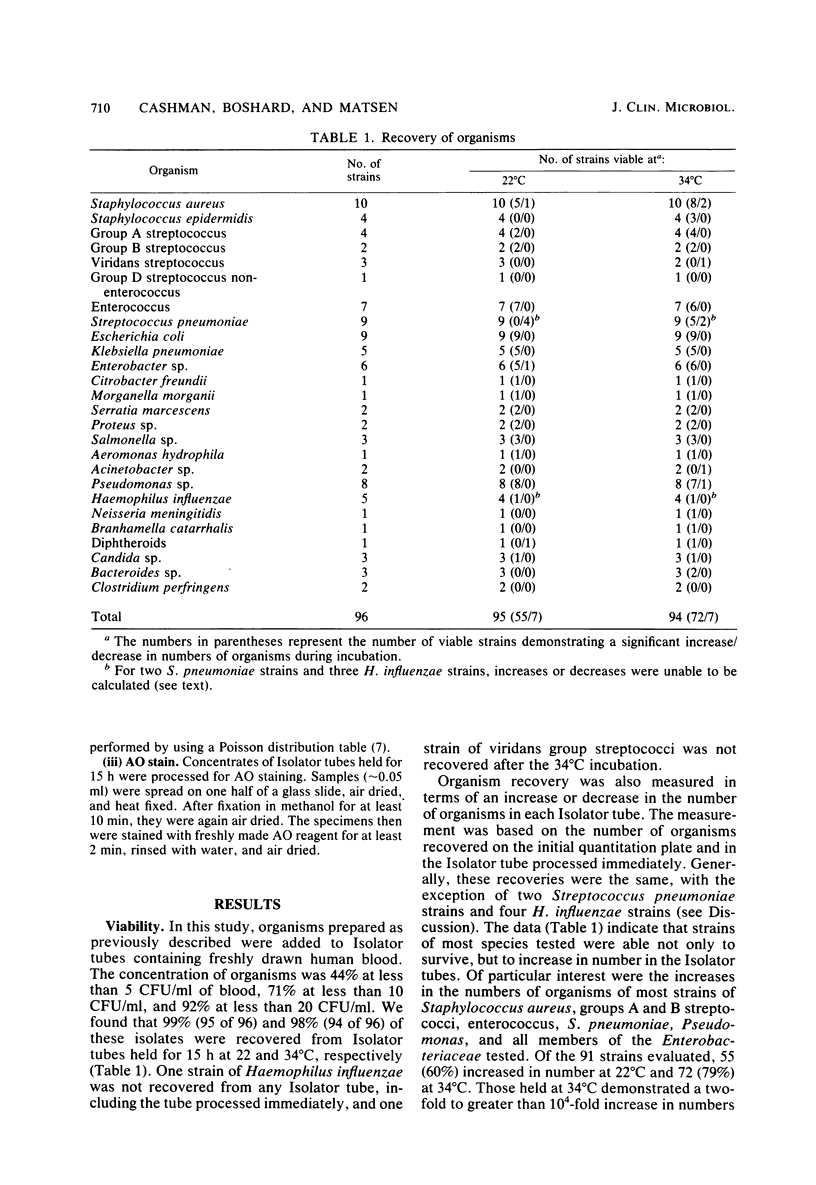
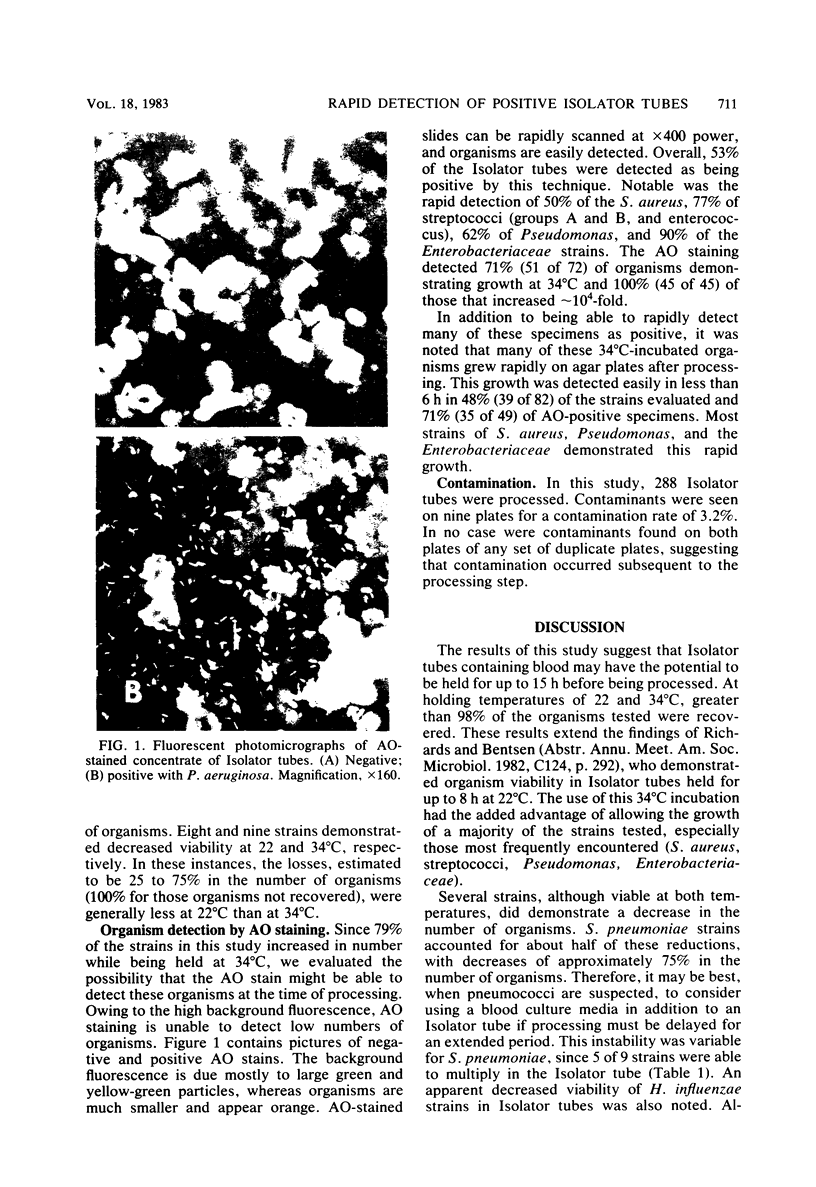
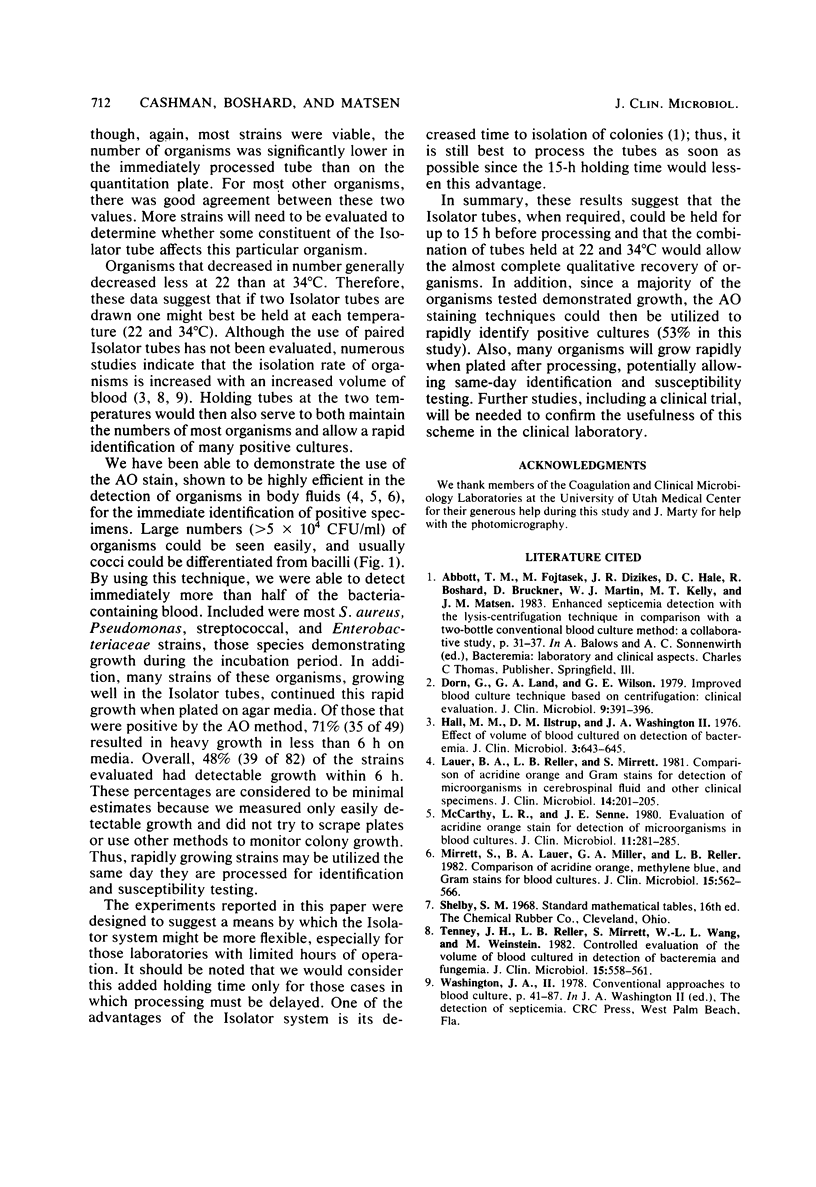
Images in this article
Selected References
These references are in PubMed. This may not be the complete list of references from this article.
- Dorn G. L., Land G. A., Wilson G. E. Improved blood culture technique based on centrifugation: clinical evaluation. J Clin Microbiol. 1979 Mar;9(3):391–396. doi: 10.1128/jcm.9.3.391-396.1979. [DOI] [PMC free article] [PubMed] [Google Scholar]
- Hall M. M., Ilstrup D. M., Washington J. A., 2nd Effect of volume of blood cultured on detection of bacteremia. J Clin Microbiol. 1976 Jun;3(6):643–645. doi: 10.1128/jcm.3.6.643-645.1976. [DOI] [PMC free article] [PubMed] [Google Scholar]
- Lauer B. A., Reller L. B., Mirrett S. Comparison of acridine orange and Gram stains for detection of microorganisms in cerebrospinal fluid and other clinical specimens. J Clin Microbiol. 1981 Aug;14(2):201–205. doi: 10.1128/jcm.14.2.201-205.1981. [DOI] [PMC free article] [PubMed] [Google Scholar]
- McCarthy L. R., Senne J. E. Evaluation of acridine orange stain for detection of microorganisms in blood cultures. J Clin Microbiol. 1980 Mar;11(3):281–285. doi: 10.1128/jcm.11.3.281-285.1980. [DOI] [PMC free article] [PubMed] [Google Scholar]
- Mirrett S., Lauer B. A., Miller G. A., Reller L. B. Comparison of acridine orange, methylene blue, and Gram stains for blood cultures. J Clin Microbiol. 1982 Apr;15(4):562–566. doi: 10.1128/jcm.15.4.562-566.1982. [DOI] [PMC free article] [PubMed] [Google Scholar]
- Tenney J. H., Reller L. B., Mirrett S., Wang W. L., Weinstein M. P. Controlled evaluation of the volume of blood cultured in detection of bacteremia and fungemia. J Clin Microbiol. 1982 Apr;15(4):558–561. doi: 10.1128/jcm.15.4.558-561.1982. [DOI] [PMC free article] [PubMed] [Google Scholar]



